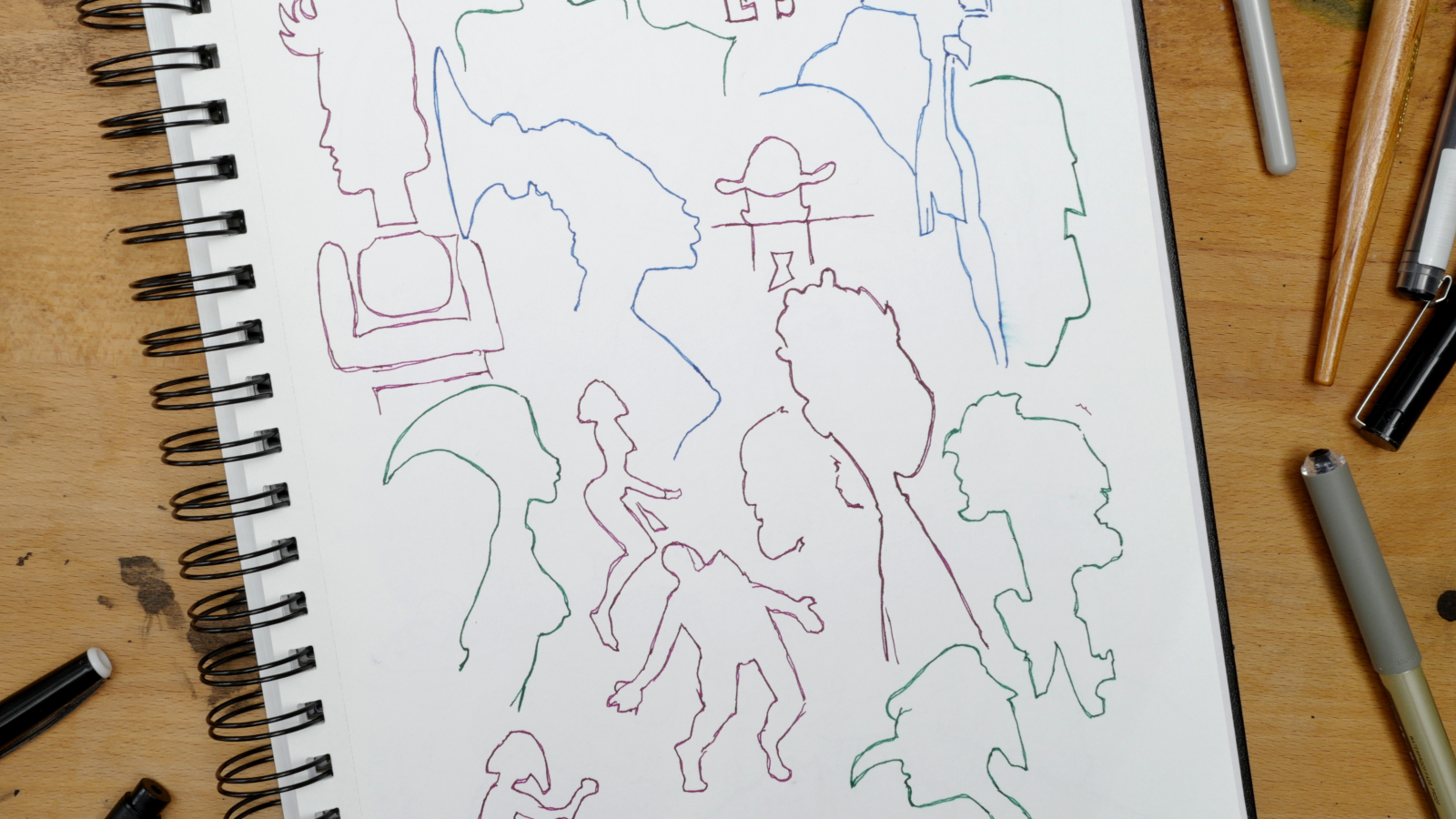#147 - How To Develop An Instinct For Proportions
Develop an instinct for proportions while having fun drawing.Later, Marshall Vandruff gave an online course on George Bridgman, in which he showed how he invented forms to create his own visually pleasing anatomy and how Bridgman considered the two-dimensional shapes formed on the page by the three-dimensional forms.
You can find the playlist with his George Bridgman course here.
Drawing outlines isn’t just a good exercise, you can use it as one of the tools in your toolbelt. At the end of the day, art is just a bunch of abstract shapes on the page. That mess of shapes is something we artists get to design.
I’m not a fan of measuring while drawing. I find it boring. I like to eyeball it, do it by sight, and feel where something needs to go on the page.
So I was happy I recently discovered a trick that makes me better at this: first, I do quick shape studies from observation, rediscovering the value of considering shapes.
The shape studies can be quick, small drawings or thumbnails. Do them repeatedly, see where the proportions and angles of the shapes are off, and repeat until you get the proportions of the inner shapes of the thing right.
I also find that when I draw something more complex, like a hand, it is useful to draw the outline shape first. That way, I don’t get distracted by the details, the things “I know,” like that there is a palm and fingers.
It is also fun to draw the outline of something first, from observation, memory, or imagination, and to fill in the details. Even if the proportions are wrong, I make it look good by creatively placing the details inside.
You can use “open lines” inside the object you are drawing. You don’t have to close shapes. The result will have a charm that it won’t have if you construct it in other ways.
It’s not just a technique; it’s a fun game! Trying to make an outline shape work is a delightful challenge.
Another game you can play is to start with three-dimensional forms in space and discover the shapes that the forms create. Then, draw the thing again, starting from the inner shapes or the outline without drawing the underlying form first.
